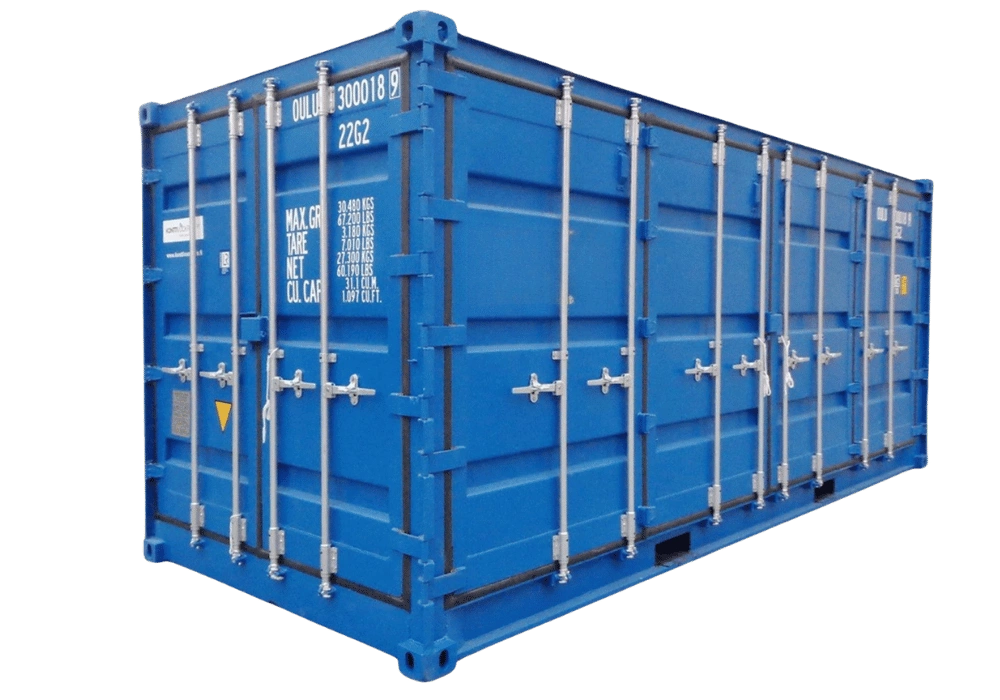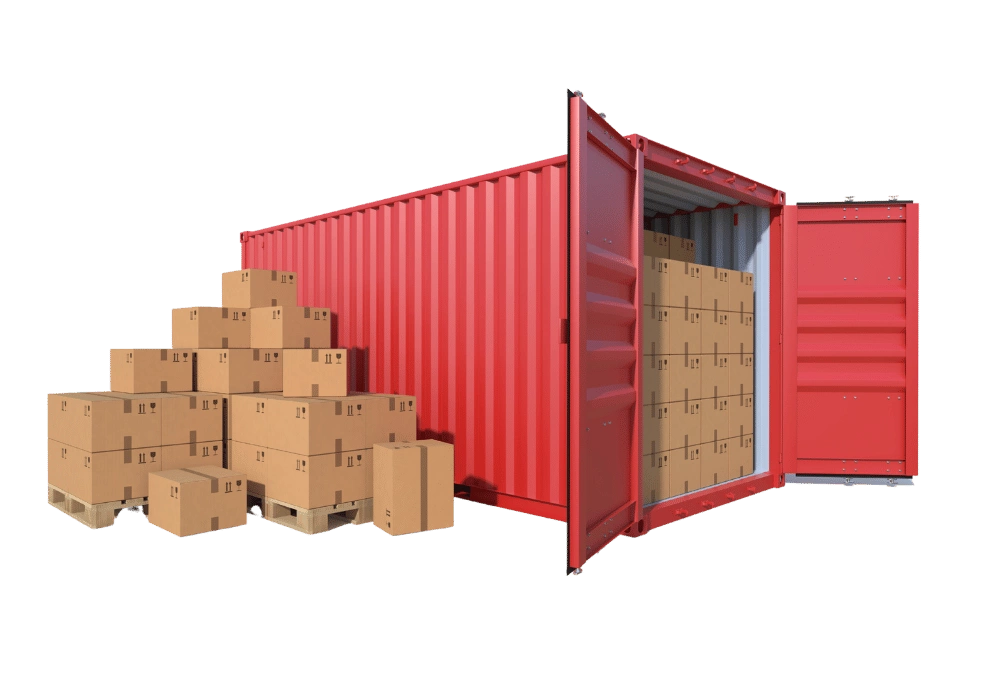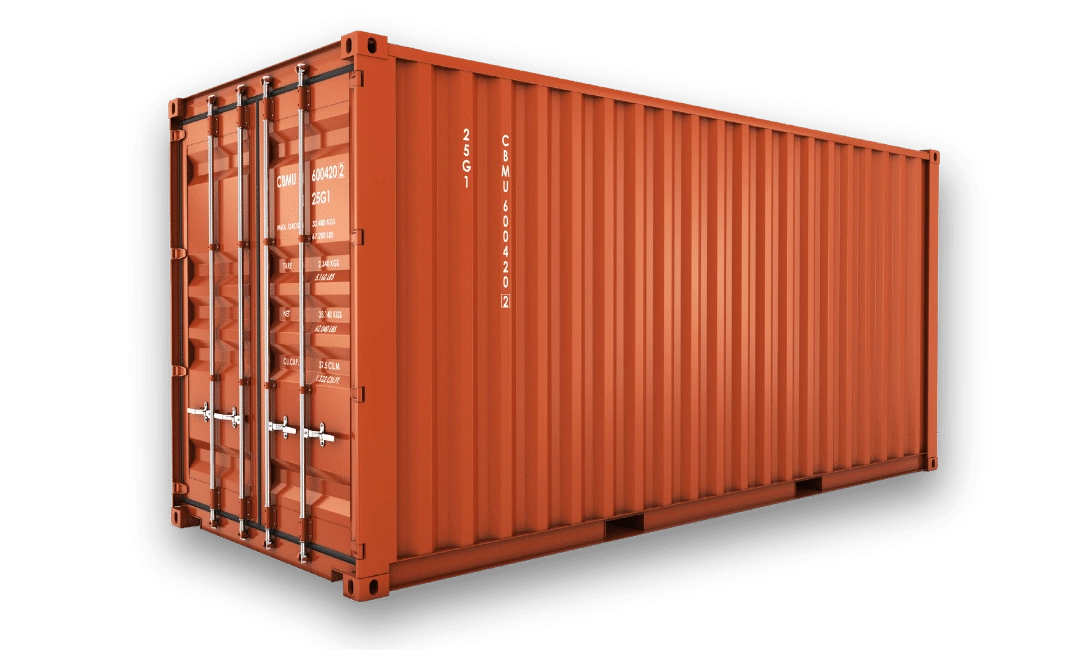Unlocking the World of Shipping Container Dimensions
Discover the Standardized Specs, Evolution, and Logistics Behind Shipping Containers
Shipping Container Requirements
40ft New- 4 side doors- Standard

Exterior Dimensions
40’L x 8’W x 8’6”H
Interior Dimensions
39’6″L x 7’8”W x 7’10”H
Door Opening Dimensions
7’8”W x 7’5”H
20 Ft New- DC ( Doors on end)

Exterior Dimensions
40’L x 8’W x 8’6”H
Interior Dimensions
39’6″L x 7’8”W x 7’10”H
Door Opening Dimensions
7’8”W x 7’5”H
Shipping containers are held to a very specific set of specifications and dimensions to ensure the same equipment can safely handle the containers anywhere in the world. The information listed on intermodal shipping container doors is standardized so the container can be handled at any port in the world, from the ID number and dimensions to the manufacturer information on the CSC Plate.
Beyond size, shipping containers come with various requirements. They are constructed to withstand the rigours of long sea voyages, ensuring the safety of goods during transit. The materials used often include corrosion-resistant steel, and containers undergo rigorous testing to meet international standards. Storage-Tech shipping containers are equipped with standardized features such as cargo doors at one end, forklift pockets for easy handling, and the inclusion of a CSC Plate containing essential information like the container’s inspection status and maximum payload. These standardized requirements ensure the interoperability of containers across different modes of transportation and locations globally, contributing to the efficiency and reliability of the shipping industry. Whether for transporting goods or providing storage solutions, understanding and adhering to these standards is paramount for seamless integration into the intricate web of global trade and logistics.
Considerations for Container Delivery Space
One of the biggest considerations when determining what size container you should buy is where it will be delivered.
- 40 FOOT SHIPPING CONTAINER - 40FT & 45FT containers use a roll-off truck and need a total of 120 linear feet of space for the container to be dropped off.
- 20 FOOT SHIPPING CONTAINER - 10FT & 20FT containers are delivered on a tilt-bed and need an additional 55 feet of space for the truck to deliver. That is 75 linear feet of total space necessary.
- Both truck types need clearance from obstacles of 12FT wide & 13.5FT high (up to 16ft high when tipped at delivery).
The Evolution Of Shipping Container Dimensions
The evolution of shipping container dimensions is closely tied to the development of standardized containers for efficient and cost-effective transportation of goods. The concept of containerization revolutionized global trade by streamlining the loading and unloading processes, reducing cargo handling costs, and increasing the speed of shipments. Here’s a brief overview of the history and evolution of shipping container dimensions:
- Pre-Containerization Era (Before 1950s):
- Prior to containerization, goods were loaded onto ships individually or in various types of non-standardized cargo containers.
- Cargo handling was labor-intensive, time-consuming, and often involved the use of diverse packaging methods.
- Malcolm McLean’s Innovation (1950s):
- The modern era of containerization began with the vision of American entrepreneur Malcolm McLean. In 1956, McLean introduced the first commercially successful container ship, the SS Ideal X.
- McLean’s containers were 8 feet (2.44 meters) in height, and their length was initially 35 feet (10.67 meters).
- ISO Container Standardization (1960s):
- The International Organization for Standardization (ISO) established standards for container dimensions to facilitate global trade. The most common container sizes standardized were 20FT and 40FT in length.
- The ISO standard dimensions for shipping containers are:
- Standard 20-FT Shipping container: 20FT long, 8FT wide, and 8.5FT high (6.1 m × 2.44 m × 2.59 m).
- Standard 40-FT container: 40FT long, 8FT wide, and 8.5FT high (12.19 m × 2.44 m × 2.59 m).
- Introduction of High Cube Containers (1970s):
- To accommodate larger or bulkier cargo, high cube containers were introduced. These containers are similar to standard containers but have an increased height of 9.5 FT (2.9 meters).
- To accommodate larger or bulkier cargo, high cube containers were introduced. These containers are similar to standard containers but have an increased height of 9.5 FT (2.9 meters).
- Specialized Containers (1980s Onward):
- Over time, the industry introduced specialized containers, such as refrigerated containers (reefers) for temperature-sensitive goods, open-top containers for tall items, and flat-rack containers for heavy or oversized cargo.
- Over time, the industry introduced specialized containers, such as refrigerated containers (reefers) for temperature-sensitive goods, open-top containers for tall items, and flat-rack containers for heavy or oversized cargo.
- Intermodal Containerization and Adoption:
- The adoption of standardized container dimensions facilitated the development of intermodal transportation systems, allowing seamless transfers between ships, trains, and trucks without the need to unpack and repack cargo.
- The adoption of standardized container dimensions facilitated the development of intermodal transportation systems, allowing seamless transfers between ships, trains, and trucks without the need to unpack and repack cargo.
- Evolution in Container Design (2000s Onward):
- Ongoing advancements in container design and materials have led to innovations in areas such as lightweight materials, improved insulation for reefers, and increased structural strength.
Find Your Shipping Container Storage Solution Today.
Connect with Storage-Tech.ca
Find Your Storage Solution

